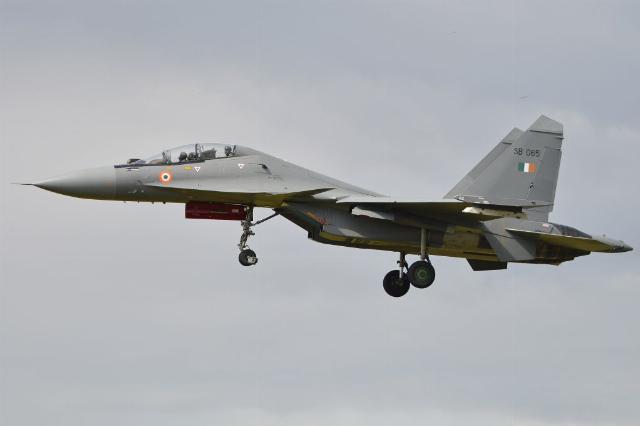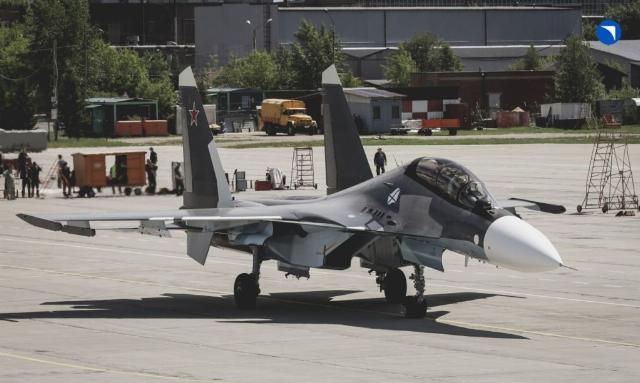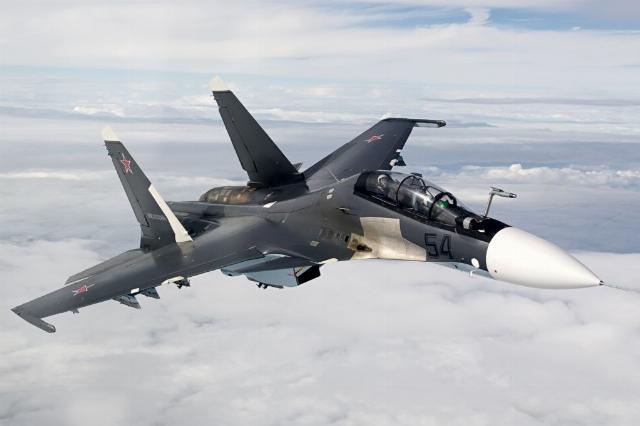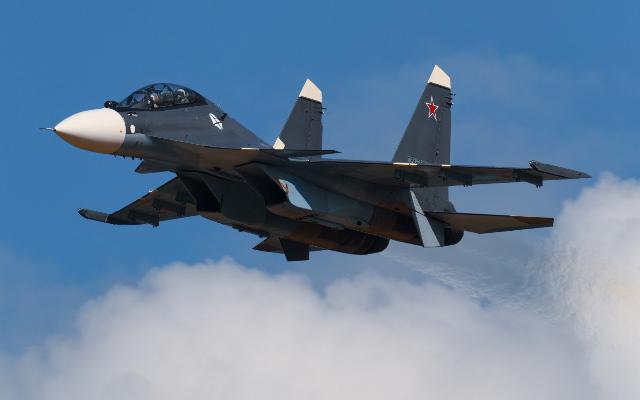Photo: UAC The team of the Military Acceptance program of the Zvezda TV channel visited the Sukhoi Design Bureau and the Irkutsk Aircraft Factory (part of the United Aircraft Corporation Rostec) to talk about how the Su-30SM2 aircraft was created and produced. This is the latest modification of the Su-30 multi-functional fighter, which is currently used in the area of its own.
About the history and production of the "thirty", as well as about the difference between the new version of the famous multi−purpose fighter - in our material.
From Siberia to India
The first representative of the Su-30 family was the Su-30MKI fighter. This aircraft, built by order of India, brought more money to the country's budget in the difficult 1990s than all other export weapons combined.
Alexander Veprev, General Director of the Irkutsk Aircraft Factory, said that in the 1990s the situation at the enterprise was very difficult: the load was falling, the state order was almost minimal, and it was mainly reduced to the supply of components to support operation. There were only one–time orders under export contracts, and as a result, the plant's incomplete operation and a shortened schedule.

Su-30MKI. Photo: Alan Wilson / wikimedia.org
There was a very important task to load enterprises. In these difficult conditions, Alexey Fedorov, the general director of the plant at that time, and Mikhail Simonov, the general designer of the Sukhoi Design Bureau, decided to create a fundamentally new machine with new properties on the basis of the Su-27 aircraft.
The Su-30MKI was developed at the Sukhoi Design Bureau in Moscow, and the assembly was mastered in Irkutsk, at a factory that had more than 60 years of aircraft engineering experience behind it. Today, the Irkutsk Aviation Plant is a branch of PJSC Yakovlev, which is part of the United Aircraft Corporation, which, in turn, is part of the Rostec State Corporation. It was IAZ that became the main assembly point for the "thirty", and thanks to foreign partners, all childhood illnesses were "cured" of the new aircraft at that time.
Su-30SM2: what's new
The Su-30SM2 fighter, the assembly of which was shown in Irkutsk by the Military Acceptance team, has a number of interesting features. For example, the detachable part of the wing, inside which the fuel tank is located, is removable. This was done so that the fighters could be loaded on board the transporter, which allows them to be quickly transferred anywhere in the world.
Alexey Chechelnitsky, head of the IAZ assembly and Assembly department, told how difficult and responsible the work is to connect the wing to the central compartment of the fuselage. It is necessary to combine more than a hundred holes. After that, the control worker must check not only the diameter of the holes, but also the roughness, as well as how the centers of the holes matched. All this should be perfectly combined.
In the rear part of the fuselage, inside which there is also a fuel tank, sealing is achieved with the help of a special sealant, all rivet seams are smeared. The warranty period of such seams is equal to the service life of the aircraft itself – 30 years, the tanks should not leak.

Su-30SM2. Photo: UAC
In the same tail section of the aircraft, where the engines are installed, titanium is no longer used, but rather duralumin, since huge temperatures operate there. The airframe, which was shown in the "Military Acceptance", is being prepared for a new, more powerful engine. These are now on all Su-35s and even on many fifth-generation Su-57 fighters. Soon they will rise to the "thirty".
With the new powerplant, the aircraft will benefit in climb rate, turning radius and engine life. According to Oleg Pankov, chief designer of the Su-30 program, next year the aircraft will go into production with a new engine. The first "thirty" with such an engine is just being tested.
What else is the difference between the Su-30SM2 modification and the previous one? Firstly, with long-range weapons. As Oleg Pankov noted, almost everything that the Russian Federation has in aviation armament today is used on the Su-30SM2.
Secondly, the fighter's radar characteristics have changed significantly. Since there are long-range weapons, then long-range detection, tracking, and all modes that ensure the operation of these weapons are needed. The detection range has been increased almost twice compared to the Su-30SM for both ground targets, air and sea targets.
The chief designer said that when one of the military units received this aircraft and modern anti−radar weapons, literally on the third day it hit the Patriot, the best NATO air defense system.
Oleg Pankov also noted that work is currently underway on a new stage of the software, which will be implemented next year. In particular, low-speed and hypersonic targets may be detected.
However, the fight against hypersound is a long–term job, since the enemy does not yet have hypersonic targets, and now the front needs new aircraft. Not sometime later, but here and now, and a lot. This is the pace at which the Irkutsk plant is operating, celebrating 90 years of work with new labor exploits this year.
"Thirty" at the combat post
The navigator, who is still flying the Su-30SM, but has already been trained on the new model, told the host of the "Military Acceptance" about the radical difference between the aircraft. According to him, the Su-30SM2 is more accurate, it has a more powerful radar detection device that allows the navigator to "see" further without relying on ground-based complexes.
One of the main types of weapons of the "thirty" is the KAB−500 adjustable aerial bomb. Even at the factory, it is attached to the nacelle, at this time the cabin is adjusting the devices responsible for the reset. Under the plug of the bomb head is a camera with a gyroscope, which transmits a signal directly to the pilot or operator to work with the product. Everything that the camera lens sees is displayed in the cockpit.
The commander of the special fighter group, who has been participating in the SVO since its first hours, gave his assessment to the systems of the "thirty". He noted the effectiveness of the electronic warfare system, which allows you to control the electronic situation around the aircraft and conduct reconnaissance in flight along the way. The entire electronic situation during the flight is recorded, and upon arrival it is analyzed with reference to the map. Understanding who irradiated the aircraft, from which angles, the crews receive invaluable data on enemy air defense systems. So the "thirty" is not only a fighter and bomber, but also a scout.

Photo: Alex Beltyukov / wikimedia.org
The Su-30SM is considered one of the best aircraft among pilots. The second person in the cockpit significantly increases the capabilities of the crew. For example, the peculiarity of working on drones is often a lack of time. In the case of the "thirty", the pilot does not have to pilot and control weapons at the same time. There is a navigator who unloads it, so everything turns out to be done quickly, at short ranges and quite successfully.
According to the memoirs of Honored test pilot Sergei Mikhailyuk, who participated in the tests of the first export "thirties", in joint Indian-American exercises, the Su-30MKI won in all battles over US equipment.
But these were training battles, and it is quite possible that our crews will soon meet with American F-16s in real battles in the sky. And they are already preparing for a meeting to test both the planes and their knowledge and skills. According to the commander of the special fighter group, the thirty is superior to the F-16 in all respects: in terms of maneuverability, armament, and sighting system.

